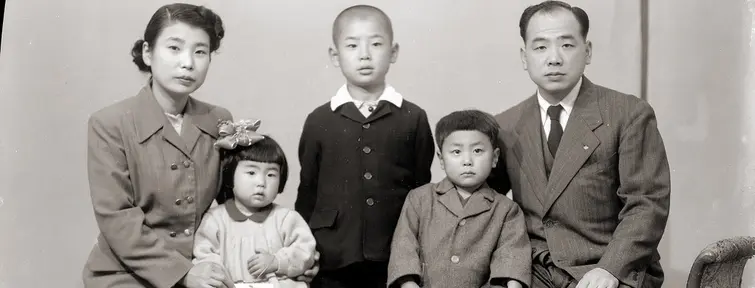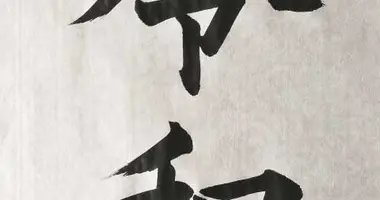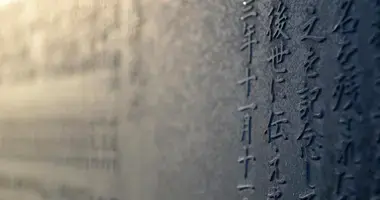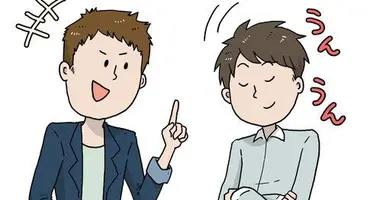Japanese surnames
- Published on : 05/09/2022
- by : J.R.
- Youtube
Family names in Japan
In Japan, there are more than 100 000 different family names! This is much more than in China and Korea, even though they are Japan's neighbors. The family name has a symbolic meaning which leads it to be placed in front of the first name and to be used instead of the latter when talking to someone.
The last name in Japanese is said to be myoji (苗 字 or 名字), uji (氏) or sei (姓).
The birth of the family name in Japan
The surname was not really born until 1875. Before, the Japanese mainly carried the name of their clan. Beginning with the Meiji Restoration in 1868, which marked the beginning of great political and social changes, the Japanese had to be registered under a single family name and personal name.
Before this date, only people of high rank such as nobles and samurai had a surname. The common people used, in case of need, the name of their place of birth, for example, their village ...
Constitution and function
In Japan, the family name is written and assumed before the first name, the latter being called "personal name". Family names are written using kanji, these characters originate in China. They consist of one to four kanji at most, but 75% are written with only two kanji characters. They can also be written in phonetics and therefore in Hiragana characters, the main syllabary of the Japanese language. More rarely, katakanas can be used as katakana are usually used for non-Japanese names.
The vast majority of Japanese names have a meaning and therefore have a connection with nature or a place. It is also very rare that family names are used as first names. To sign official documents, the Japanese usually use a hanko (inked seal). They can be round, square, or oval and still widely used as a means for an official autograph, although the classic signature also exists.
However, there are exceptions, as the members of the Japanese imperial family do not have the last name. They simply sign with their first name!
The most popular names in Japan
In 2017, 1.9 million people in Japan had the most common name, Sato (佐藤), which still represents 1.5% of the population.
Here are the 10 most common last names :
- 1. Sato (1,928,000) 佐藤 - means "to help"
- 2. Suzuki (1,707,000) 鈴木 - means "tree bell"
- 3. Takahashi (1,416,000) 高橋 - means "high bridge"
- 4. Tanaka (1,336,000) 田中 - means "center of the paddy field"
- 5. Watanabe (1,134,000) 渡 辺 - means "to cross"
- 6. Ito (1,080,000) 伊藤 - means "The Fujiwara of Ise"
- 7. Yamamoto (1,077,000) 山 本 - means "foot of the mountain"
- 8. Nakamura (1,059,000) 中 村 - means "village center"
- 9. Kobayashi (1,019,000) 小林 - means "small forest"
- 10. Saito (980,000) 斉 藤 - 斉 means "ritual", associated with 藤 ("to") which relates to the Fujiwara clan
The origins
Before 1875, Japanese people were mainly called by their clan name. From the Meiji Restoration in 1868, Japanese people had to be registered under a single family name, personal and unique to each one.
This change brings a great evolution in Japanese society because before this date, only the people of high rank such as the nobles and the samurais carried a family name. At that time, as in some cases in France before the implementation of the family name, common people used the name of the place of birth, such as the village for example.
Construction and use of the Japanese family name
In Japan, the family name is written and said before the first name, the latter being called "personal name". We can see in Japanese manga and movies that calling someone by his first name characterizes a certain closeness with this person. Otherwise, it is perceived as very disrespectful!
Family names are written using kanji, characters coming from Chinese, and are widely used in the Japanese language. They are made up of one to four kanji at most, however, 75% are written with only two kanji. Names are subject to a certain diversity in Japanese culture, so much so that some of them can also be written with hiraganas (the main alphabet of the Japanese language) or more rarely with katakanas.
Read also: Japanese writing
Japanese names have very often a meaning, related to nature or a specific place. In this sense, it is very rare that first names are also used as family names, unlike in France where it is very common (Martin, Robert, Laurent are for example very common first names as family names).
To sign official documents, Japanese people usually use a Hanko, an ink stamp that affixes their personal seal and thus their name in kanji or hiragana. They are round, square, or oval and are still widely used, although the classic signature is also very common.
Fun fact: the members of the Japanese imperial family do not have a family name. They simply use their first name as a signature!
Top 10 of most common names in Japan
- 1. Sato (1 928 000) 佐藤 - means "helping"
- 2. Suzuki (1 707 000) 鈴木 - means "tree bell"
- 3. Takahashi (1 416 000) 高橋 - means "high bridge"
- 4. Tanaka (1 336 000) 田中 - means "center of the rice field"
- 5. Watanabe (1 134 000) 渡辺 - means "to cross"
- 6. Ito (1 080 000) 伊藤 - means "Fujiwara of Ise"
- 7. Yamamoto (1 077 000) 山本 - means "foot of the mountain"
- 8. Nakamura (1 059 000) 中村 - means "center of the village"
- 9. Kobayashi (1 019 000) 小林 - means "small forest"
- 10. Saito (980 000) 斉藤 - 斉 means "ritual", associated to 藤 ("to") which refers to the Fujiwara clan












